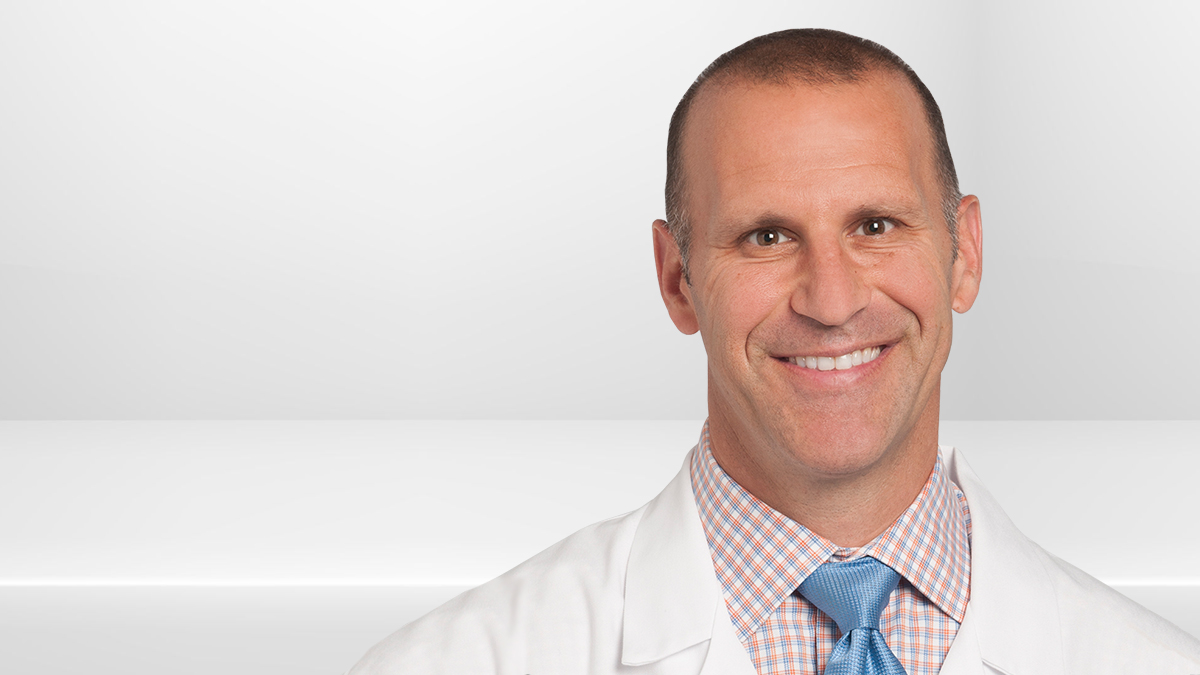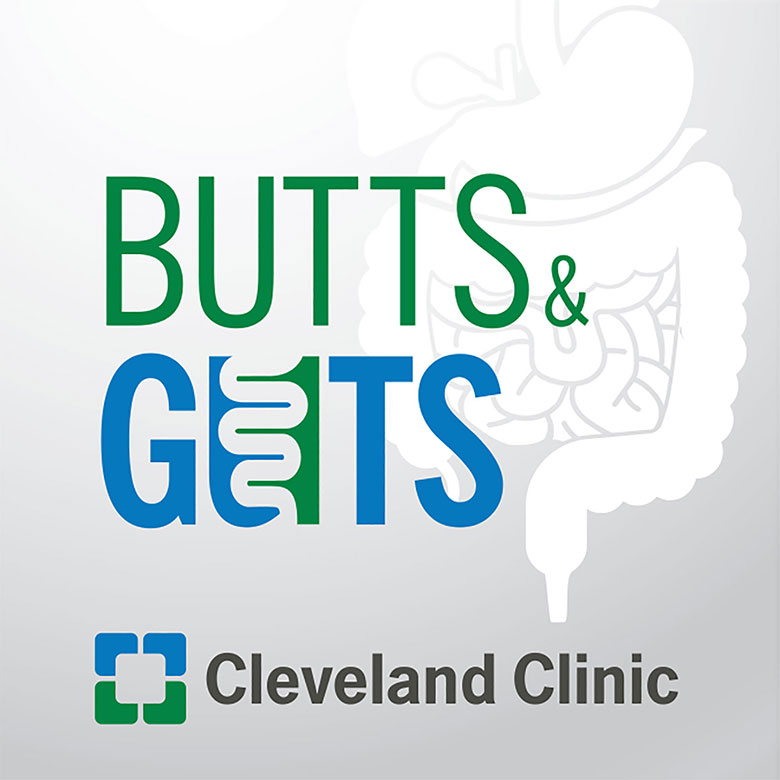Advances in Treating Mandibular Osteoradionecrosis

Michael Fritz, MD, Director of the Section of Facial Plastic and Reconstructive Surgery at Cleveland Clinic, joins the Cancer Advances Podcast to talk about the approaches to the classification and management of mandibular osteoradionecrosis (ORN). Listen as Dr. Fritz shares insights into the classification and treatment of ORN, including the role of PENTO therapy and the groundbreaking anterolateral thigh rescue flap technique, highlighting the importance of early intervention and how multidisciplinary collaboration can improve patient outcomes.
Subscribe: Apple Podcasts | Podcast Addict | Buzzsprout | Spotify
Advances in Treating Mandibular Osteoradionecrosis
Podcast Transcript
Dale Shepard, MD, PhD: Cancer Advances, a Cleveland Clinic podcast for medical professionals, exploring the latest innovative research and clinical advances in the field of oncology. Thank you for joining us for another episode of Cancer Advances. I'm your host, Dr. Dale Shepard, a Medical Oncologist, Director of International Programs for the Cancer Institute, Co-Director of the Sarcoma Program at Cleveland Clinic.
Today I'm happy to be joined by Dr. Michael Fritz, Director of the Section of Facial Plastic and Reconstructive Surgery. He was previously a guest on this podcast to discuss use of anterolateral thigh fascia lata rescue flap for treating osteonecrosis. He's here today to discuss advances in treating mandibular osteoradiononecrosis. So, welcome back.
Michael Fritz, MD: Thanks. It's good to be here.
Dale Shepard, MD, PhD: So, give us a little bit of an idea what you do here at the clinic.
Michael Fritz, MD: So, I am a long-standing employee of the Cleveland Clinic since, I think 1997. I was a resident here and then I did my fellowship and came back. And since then, I've been doing basically facial plastic and reconstructive surgery with a heavy emphasis on the reconstructive aspect of it, and a heavy emphasis on microvascular surgery which is auto transplant surgery essentially, transferring spare parts from one part of the body to another to rebuild faces. So, I do some cosmetics because I think to be good at one, you have to be good at the other, and I enjoy it. But if you ask what my primary focus was, it's rebuilding faces.
Dale Shepard, MD, PhD: When we talk about rebuilding faces, we're going to talk about this mandibular osteoradiononecrosis. So, give us an idea. A lot of different people might be listening in. What exactly is osteoradiononecrosis?
Michael Fritz, MD: So, we like to say ORN as much as we can because it's too long of a word-
Dale Shepard, MD, PhD: It is a mouthful.
Michael Fritz, MD: Yeah. So ORN is basically the gift that keeps on giving from cancer treatment. The folks that get it have by definition recurrent cancer excluded, but they have exposed bone for more than a few months after receiving radiation therapy. And it usually happens pretty far out from treatment. And often, these people are deemed from their primary cancer. The bone has been treated with the radiation as a side effect because at least in the head-neck region, it's very close pretty much all the time, especially to the mandible, but also can be the C-spine or the skull or the maxilla. And as a secondary effect, it gets a pretty heavy dose and that affects wound healing capabilities, blood supply. So at least in the mandible, it very often starts with a problem with your tooth, and that tooth, either you get some erosion of the tissue around it, or the tooth has to be pulled. And then you have this gravity-fed basin of spit on bone that can't heal. And then it starts this cascade of ORN, which is basically evolving bone death.
Dale Shepard, MD, PhD: How has that historically been managed?
Michael Fritz, MD: So, when I was a resident and when I was a young staff, we gave everyone the leaky roof talk. We told them, "You have a problem, and it's basically the equivalent of a roof leaking, but the solution is a tear-off. There's no small solution." So conservative efforts like hyperbaric oxygen, which I think we'll probably touch on, is really not endorsed anymore, or any antibiotic management didn't work, we would tell them, "Wait. Wait until it was bad enough for us to cut a segment of your jaw out and then rebuild it with your leg bone, your fibula, typically." That works very well, but it's a pretty darn big operation, a lot to go through. And it also can compromise the already compromised function they have from their previous cancer treatment. A lot of people never recover all the way from that operation, but that's all we had.
Dale Shepard, MD, PhD: What are some of the newer advances that have come around since then, since it's been a couple of years since your training and your-
Michael Fritz, MD: Right. So, there's some surgical advances and some medical advances and some medical decisions, basically. One is the addition of PENTO, which is pentoxifylline, which is essentially the generic name for Trental, which most of us remember when we were treating people with vascular disease, when they had claudication and we'd give it to them. Essentially, it's a phosphodiesterase inhibitor. It makes red blood cells more bendy and has anti-inflammatory properties. And then the TO in the PENTO is tocopherol, which is vitamin E, which is also a blood thinner and an antioxidant. And those two together have shown promise in treating early osteoradionecrosis. When it's confined to the area around the tooth, over 60% of people get better.
The studies aren't crazy robust, they're not perfect randomized controlled studies, but there's enough information out there that PENTO shows real promise in early ORN disease. People looked at clodronate, which is a bisphosphonate, because there's a theory of osteoclast-osteoblast imbalance. The bone is basically resorbing, but bisphosphonates in and of themselves can cause problems. About 10% of medical osteonecrosis is caused by oral bisphosphonates. So, we are a little hesitant to go ahead with that because it's more expensive, less well tolerated, and the studies haven't borne out that it has any more efficacy. So, PENTO is good. PENTOCLO, which is with the clodronate, is not bad, but probably not necessary. But those are our new tools in the toolbox for early disease.
Dale Shepard, MD, PhD: And when we talk about early disease, and then you started off, you talked about actually waiting until people have more significant disease. Tell us a little bit about how this is classified, some changes in staging and how we think about the disease?
Michael Fritz, MD: So, the new ways we think about it, first of all, there were two major staging systems for osteoradiononecrosis that were dominant. One was the Marx staging system, which was based on essentially the failure of hyperbaric oxygen. That's fallen by the wayside because no randomized controlled study now shows that HBO is super effective with osteoradiononecrosis. It certainly has great effects with other wound healing processes. It's not that HBO doesn’t work; it just doesn't work when the bone is dead. So, the Marx protocol and the Marx staging system really isn't used much anymore. The Notani staging system is a really easy anatomic staging system where it's very simple, if the bone problems are confined to the level of the teeth, it's a I. The inferior alveolar nerve canal is really easy to see on a Panorex. It's right in everyone's mandible. If it's below the teeth above the canal, it's an II, and then anything below the canal is a III.
The shortcomings of the Notani system are, if it's below the canal and the mandible still has a lot of robust bone down there, it's a III. If the mandible's completely exploded and infected and you're missing a fractured fragmented jaw on that side, it's a III. If you have a fistula straining through your neck, it's still a III. So, we don't define bad versus super bad, but in the past, it didn't really matter because there was no moderate ORN solution. And that changed with the inception of the anterolateral thigh rescue flap. So, we now have PENTO, and we have an intermediate solution with the rescue flap, and then we still have the segmental resection. So, we wanted a staging system that reflected decision-making along that, and with a treatment algorithm that simplified care.
Dale Shepard, MD, PhD: And then you previously had joined us and talked to us about the rescue flap. Maybe you can remind us quickly what that is and how that work?
Michael Fritz, MD: So, the rescue flap was just an adaptation of the anterolateral thigh free flap, and that's essentially a tissue transplant off of the midportion of your lateral thigh, and it's based on the descending branch of the lateral circumflex femoral artery. And I tell my patients when it's that long of a name, it's not that important. It's a branch of some vessel in your leg. So, it's basically free spare parts. It's tissue that comes over the quadriceps muscle, and we use ALTs preferentially for anything we can do because people can walk the same day afterwards. We actually did some of these as an outpatient during COVID when we couldn't admit, so it's a super forgiving free flap. And then with the rescue flap, a very smart oral surgeon of mine had a patient who had failed hyperbaric oxygen because he had a retinal detachment in the chamber.
He had still lots of good bone in his jaw, but we knew he had two molar teeth that needed to be removed and he was going to be missing a significant amount of the surface of his bone, and there was going to be a big surface area missing as well to heal. And we knew he wasn't going to heal with his history of radiation. So, she asked me if I could put something in there. And the suggestion was something big, which was a pectoralis flap, which they used to do, and we really try and avoid now because kind of a mean operation to do to people, but we were doing these little minimal access with very small incisions, perforator flaps with the anterolateral thigh for other purposes. And so, we're like, "Well, why don't we just put this in this hole? Because it's great, highly vascularized tissue. Let's see how it heals."
That guy left the morning after surgery and didn't look back for 14 years. So, we knew we were onto something there, and we started looking for patients who were ideal candidates for this. It took us a long time to accrue enough patients, because no one was referring anybody except for end-stage ORN because they basically gave them all the leaky roof tear-off talk and they'd show up for surgery when they needed the whole segment of the mandible removed. So, we finally got enough people that we did this minimal access perforator flap surgery on, and we show that it's got 96% control of ORN. The average stay is two days in the hospital. It's about a four-operation... You can drink right away. You stay on a soft diet for a little while, but that's about it. Nobody needs a trach, because no swelling from it.
So, it's a very, very simplified intermediate stage, but it's a incredibly powerful way to deliver blood supply. And what good is the blood supply? Well, first it covers up the exposed bone, so you don't have spit sitting on the jaw. Secondly, it delivers a new blood supply to all the surrounding mandible. We drill it down until it's bleeding, but all that's watershed area. And so, we're really babysitting that jaw, but we're also allowing delivery of antibiotics to the infected portions of the jaw. So, it just basically covers it up, washes it out, and helps it heal, and it's been really, really effective.
Dale Shepard, MD, PhD: When we talk about management of this, we're of course a center that you see a lot of this is what you focus on, how common is this that people get referred in at the right time? Is there still an educational opportunity here?
Michael Fritz, MD: Oh, for sure. The ASCO multidisciplinary panel that basically stated there was no compelling evidence for the use of HBO just published last year. And so even hyperbaric oxygen is being used pretty commonly, although my patients now are saying that they've heard it's not good, so the message is getting out. A lot of them are coming in on PENTO, but not all of them. And that's the simple solution. Everyone should be on PENTO. And then the rescue flap, it's mostly self-directed folks that find it online. There aren't that many surgeons that are referring for this. And to be honest with you, if you're a good perforator flap microvascular surgeon, they can be doing this. This is something that it's not an exclusive. Only Cleveland Clinic, the fanciest people can do it. If you watch this operation and you learn it, it's a pretty reasonably simple operation to do.
Dale Shepard, MD, PhD: This is something that you said doesn't happen right away. In patients that have been treated, what timeframe are we looking at? How long-
Michael Fritz, MD: It's super variable. There are people that will show up for ORN six months after radiation while they're still being surveyed for their cancer, which is why we really have to rule out recurrence. Then you'll see people who, 15 years later after their cancer treatment, will have a problem with their tooth, and it just causes this escalating process.
Dale Shepard, MD, PhD: How do we adequately make sure people are actually following the right way to even find it in the first place? Is it mostly their oncologists? Is it mostly dentists? Who normally is the one who's monitoring this and finds it and just initiates management?
Michael Fritz, MD: Yeah, the gatekeepers are typically the dentists because they'll see the problems, and the ORN typically presents as dental pain. And so, they'll show up and they'll get some imaging, and it shows basically moth-eaten degraded bone. And if people don't know there's something you can do for early intervention, they watch it. That's something we can change for sure.
Dale Shepard, MD, PhD: So, when we think about surgery, really, we talked about the flap, but the full-blown, as you say, the tear-off, how often do we have to do that anymore?
Michael Fritz, MD: Well, I have to do it a good amount because I have people that come in now from far away hoping that they can be candidates for the rescue operation, and their bone is degraded because they've had all these treatments for years before. So, fibula free flaps, we're probably doing two or three of them a week here at Main Campus. But those are much more commonly now for oncologic purposes when we have to take the bone out to get a full margin on cancer. We're doing far fewer now for osteoradionecrosis because we're intervening here. We have a big team and there's a bunch of surgeons here that do this rescue flap operation just as well as I do. So, we are catching people earlier. We are also pushing the edges of it. If you have a full thickness fracture now, it doesn't necessarily mean you get a fibula.
If you still have a lot of bone that looks healthy, we will span plate that, stabilize it, and then bone graft it. And that's something I didn't mention, is we started for the very borderline candidates that we thought they had about less than a centimeter of mandible and they had a chance of breaking their jaw after we drilled them down. We would start at packing this area with iliac crest bone graft, which is really forgiving. It's like a few-centimeter incision over the hip. We just trap door it open, scoop out a little of the cancer less bone, and then sew it right back closed. And we put Exparel in there, which is a liposomal bupivacaine. So, for 72 hours, they're numb, and they often don't even feel that we did anything by the time that wears off. So, it's a really easy adjunct, and it was a little bit of a leap of faith to do that because we were putting non-vascularized graft, and now we're surrounding with this rescue flaps.
It's getting completely buried in super healthy vascularized tissue, but we're throwing another variable in the process in a field that was infected. But what we found is those folks, even with the worst disease, when we did our recent study, they did just as well. Actually, none of them failed. And so now we're starting to put bone graft more aggressively in them. And then for this full thickness disease that I was starting to talk about, we're spanning them with a plate. And if it's less than a couple centimeters, we're just using the bone graft to get bone union across that. So, we're not doing fibulas for that. So, we're reserving fibulas for people that have a four- or five-centimeter or bigger defect after we cut out all the bad bones. So, it's got to be a bunch of bad bone.
And the way we started on that is we talked to people that came in that wanted a rescue flap. I said, "You're not a candidate. You have a fracture" But we have started doing these spanning plates. I don't know what the success rate is because we've only done about 10 of them. We haven't failed yet, but I had to have a very honest conversation with them. We just don't have the numbers or the follow-up. But uniformly, they're like, "Well, that's an order of magnitude smaller operation, and it doesn't burn any bridges at all for further reconstruction. Yeah, for sure. I want to try that." So, so far, that's been successful as well. So, we're doing a lot fewer fibulas in general for ORN, except for the people that come really far advanced.
Dale Shepard, MD, PhD: We've been talking about treatments for ORN. This is of course from radiation related from their treatment. Are we likely to be seen less in the future due to any changes in radiation technique?
Michael Fritz, MD: Well, image-modulated radiation therapy, IMRT, has changed that landscape. The incidence has dropped, but I don't think it's ever going to be zero. And we still see a good deal of it. What we see is it's more focal now. I used to earlier on in my practice see very broad areas of ORN that span like the hemi mandible, from lateral to the front teeth all the way to the angle. Now it seems to be much more focal and started by one tooth failing, and it's creeping along, which lends itself much more to the rescue flap to stop it. But I think it's always going to occur. We're delivering high doses of radiation to cancer, which is against the bone, so the bone has to get some of the field.
Dale Shepard, MD, PhD: So, a lot of improvements, what's going to be the next break?
Michael Fritz, MD: Well, when people do need fibulas, we started doing them transorally now, without external incisions. The complication rate reported two years ago by a publication by MD Anderson was over 60% major complication rate, with huge costs. Over 10% of people were permanently trach-dependent, just big morbidity with that operation. And a lot of that is due to the fact that we were going through all this irradiated neck and face to expose big areas of the jaw to put a plate on and to rebuild it with a fibula. So, we thought, well, we do a lot of stuff through hidden incisions in the mouth. Why don't we start dropping the fibulas in transorally? And we've done a number of those now. I think our number is up to 15, and we've had no complications. The hospital stay has been cut in half. They're all eating right away, no trachs.
So, this is definitely a game changer in the more advanced ORN, with the transoral fibula. It's more complicated in terms of how you orient the blood vessels, and we have to sew the big fibula blood vessels into smaller blood vessels more often. But again, it's something we do a lot of here, so it's not that difficult. And so that's our newest innovation in addition to the spanning plates and the iliac crest bone graft. What's next on the horizon? I think we can wrap tissue with vascularized flap and then rebuild parts of the face that we normally would be taking bones out for with surface ruling polymers, progenitor cells, scaffolds. We know we can get bone grafts to heal in really hostile environments. We can start rebuilding faces. We're still always going to need free tissue in my career, I think, but we can do it in a gentler way for people where we're not stealing major structures from them.
Dale Shepard, MD, PhD: Well, it sounds like really significant advances at all stages. It sounds like only good things to come.
Michael Fritz, MD: Yeah. Our new staging system, so this comprehensive review that we came out with, really goes over, breaks down everything medical and surgical for ORN. And we designed a new staging system with treatment algorithm based on all these things we know now. So, where Stage I's the same as a Notani. Stage II is a Notani II, but also, if there's a larger surface area, because there's evidence that PENTO doesn't work for larger surface areas. So, it's either a big area that's missing or a deep disease, but still above the canal. Stage III is above canal, but there's plenty of bone to maintain stability. A IV is, we're going to have to put iliac crest bone graft in there because it's getting towards the edge of the mandible less than a centimeter. And then a V is full thickness. And there's a nice color flow diagram with this that basically guides treatment protocols or referrals based on this, so we think it's going to be a really nice addition to management.
Dale Shepard, MD, PhD: That's fantastic. So it helps everyone understand the right way to treat at all the different stages.
Michael Fritz, MD: Yep. We're pretty excited about it.
Dale Shepard, MD, PhD: Well, appreciate you being with us and your insights today.
Michael Fritz, MD: Thanks for having me. It's been a pleasure.
Dale Shepard, MD, PhD: To make a direct online referral to our Cancer Institute, complete our online cancer patient referral form by visiting clevelandclinic.org/cancerpatientreferrals. You will receive confirmation once the appointment is scheduled.
This concludes this episode of Cancer Advances. For more podcast episodes, visit our website, clevelandclinic.org/canceradvancespodcast. Subscribe on Apple Podcasts, Spotify, or wherever you listen to podcasts.
Thank you for listening. Please join us again soon.


